In two days, Intel will officially unveil the Arrow Lake-S series desktop processors (Core Ultra 200), which will offer a completely new architecture. Like the already released mobile Core Ultra 200V (Lunar Lake), desktop models received productive Lion Cove P-cores and energy-efficient Skymont E-cores. Intel is already sending promotional materials to partners, and they eventually leaked online, revealing information about the performance of Arrow Lake-S.
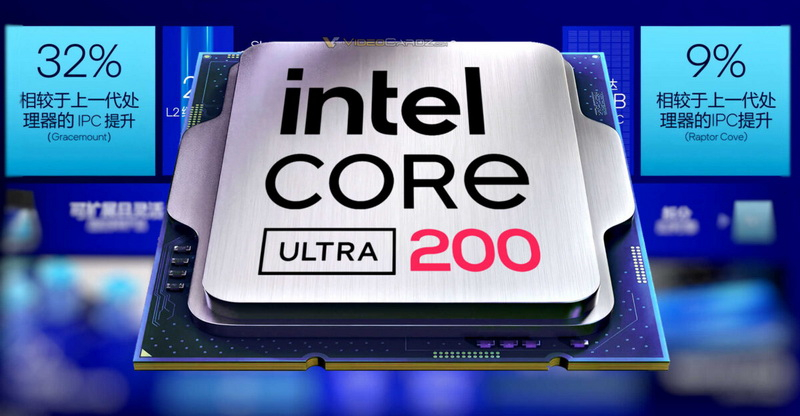
Image source: VideoCardz
A large-scale leak about the performance of Arrow Lake-S occurred in the Chinese media. One of the published slides from Intel’s upcoming presentation reports that Arrow Lake-S will offer an increase in IPC (the number of instructions executed per clock) not only for P-cores, but also for E-cores. At the same time, the latter will receive a more significant increase compared to the E-cores of Raptor Lake Refresh processors (14th generation Core).
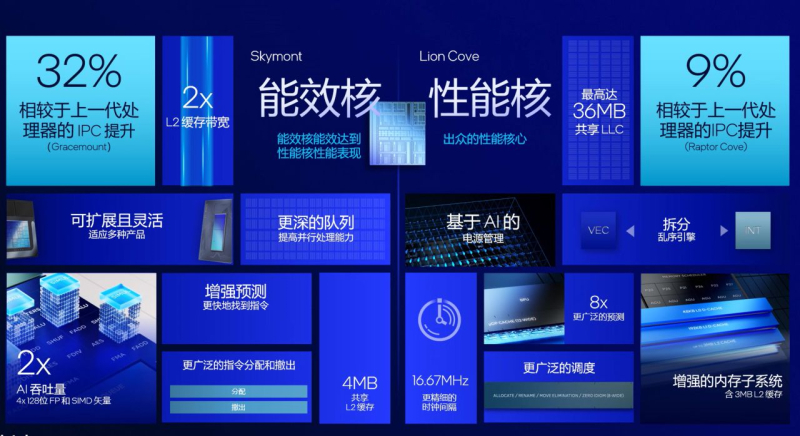
IPC data for Intel Core Ultra 200 (Arrow Lake-S). Image source: X/HXL/Intel
The performance Lion Cove P-cores in Arrow Lake-S will offer a 9% increase in IPC compared to the Raptor Cove cores in Raptor Lake Refresh. In turn, Skymont’s E-cores will provide a 32 percent increase in IPC compared to Gracemont’s predecessors. The clock frequency of the processors is not specified, but the slide indicates that it will be able to change in steps of 16.67 MHz, which, apparently, will allow the frequency to be more smoothly adjusted to certain tasks.
For Lion Cove cores, 36 MB of shared LLC cache (Last Level Cache) is declared, and 3 MB of L2 cache memory is allocated for each P-core of the processor. In turn, small cores will receive 4 MB of shared L2 cache per cluster of four cores. It is noted that the throughput of the second level cache will be doubled compared to its predecessor.

Single-core performance Intel Core Ultra 200 (Arrow Lake-S). Image source: X/HXL/Intel
On another slide, Intel compares the performance of the new flagship Core Ultra 9 285K processor from the Arrow Lake-S series with the current flagship AMD Ryzen 9 9950X in four benchmarks. Intel says its chip is on average 8% faster in single-core performance than its predecessor, the Core i9-14900K, and 4% faster than the Ryzen 9 9950X.
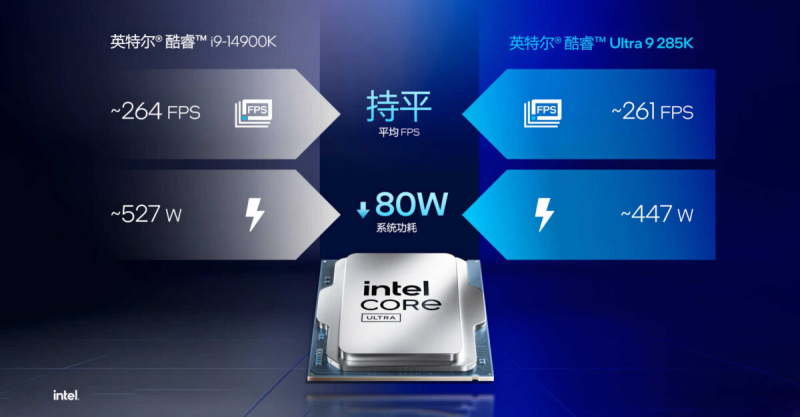
But in games the situation is different. Intel admits that the upcoming Core Ultra 9 285K will actually be slightly slower than its predecessor, the Core i9-14900K. A system based on the current generation chip averaged 264 frames per second in games, while a system based on the new Core Ultra 9 285K only achieved 261 frames per second. This should be somewhat offset by the reduced power consumption of the new architecture. A Core i9-14900K-based PC consumed 527 W in Intel’s tests, while a Core Ultra 9 285K-based PC consumed only 447 W.
Another slide shows that the Core Ultra 9 285K delivers comparable gaming performance to the Raptor Lake Refresh, but consumes 34 to 165 W less power.
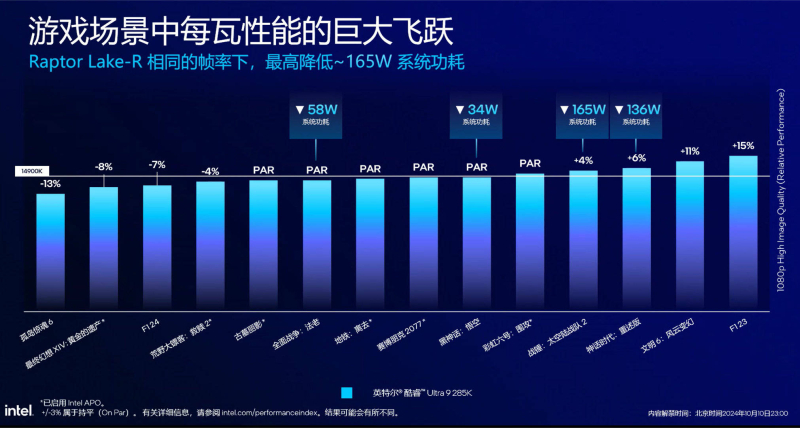
Core Ultra 9 285K vs Raptor Lake Refresh. Image Source: X/@wnxod/Intel
Intel also compares the performance of the Core Ultra 9 285K with the AMD Ryzen 9 9950X and AMD Ryzen 9 7950X3D. In synthetic tests, Intel’s new product confidently outperforms the Ryzen 9 7950X3D, but in games the situation is ambiguous – in some places the Core Ultra 9 285K is faster, and in others it lags behind by up to 21%.
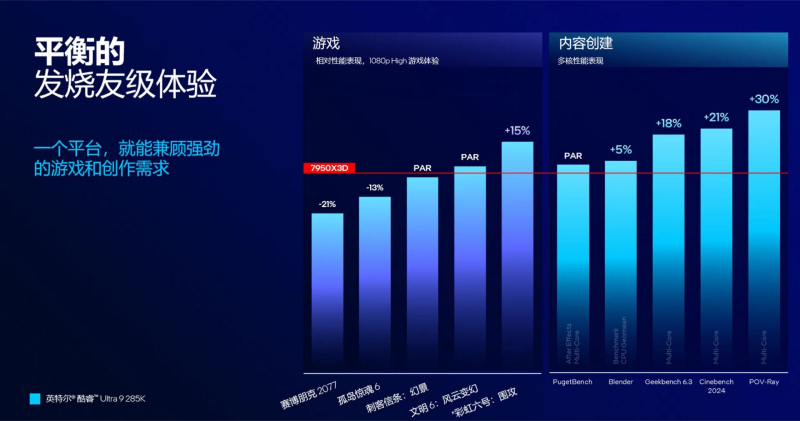
Core Ultra 9 285K vs Ryzen 9 7950X3D. Image Source: X/@wnxod/Intel
Compared to the Ryzen 9 9950X, the new Intel processor is on average 0.26% faster (PAR value in the graph indicates performance parity). However, Intel has not yet shared graphs comparing the power consumption of the Ryzen 9 and Core Ultra 9 285K. Or this data has not yet leaked to the Internet.

Core Ultra 9 285K vs Ryzen 9 9950X. Image Source: X/@wnxod/Intel
It should also be noted that Intel uses the Application Optimizations (APO) function for its benchmarks – special software that optimally distributes the load between different types of cores, thereby increasing performance and FPS.